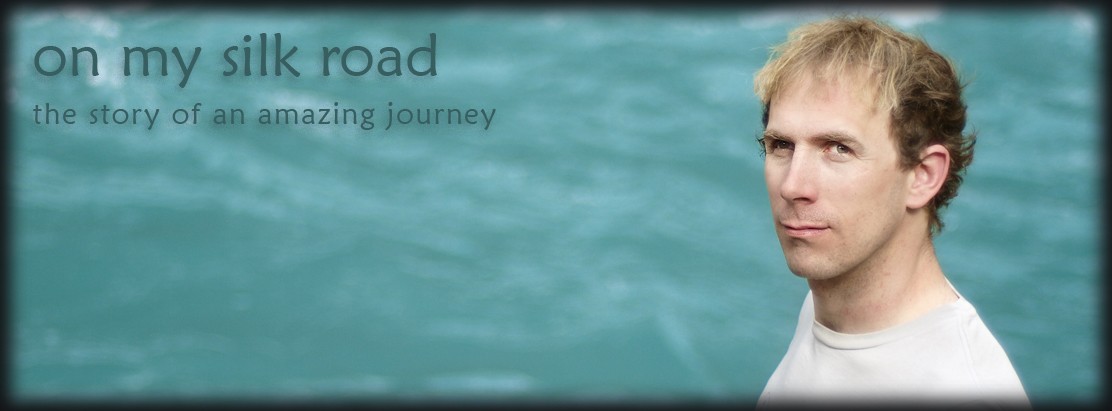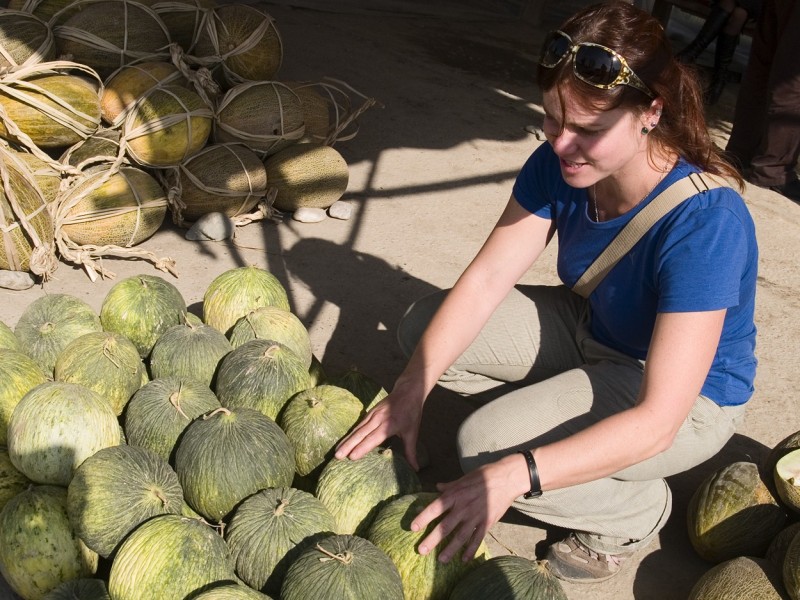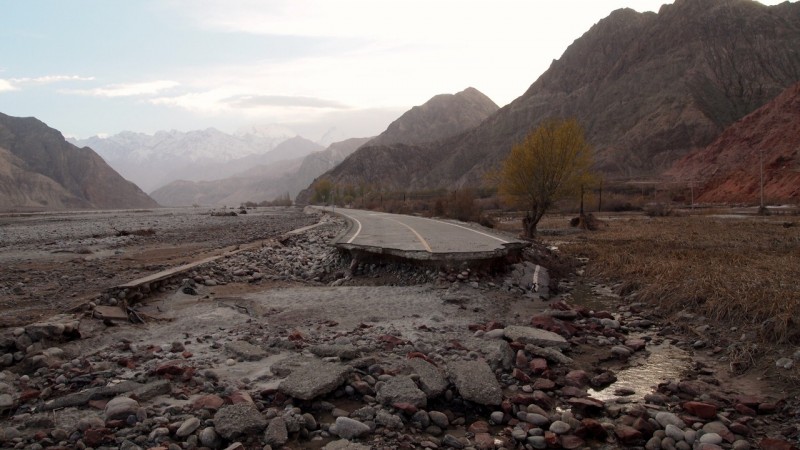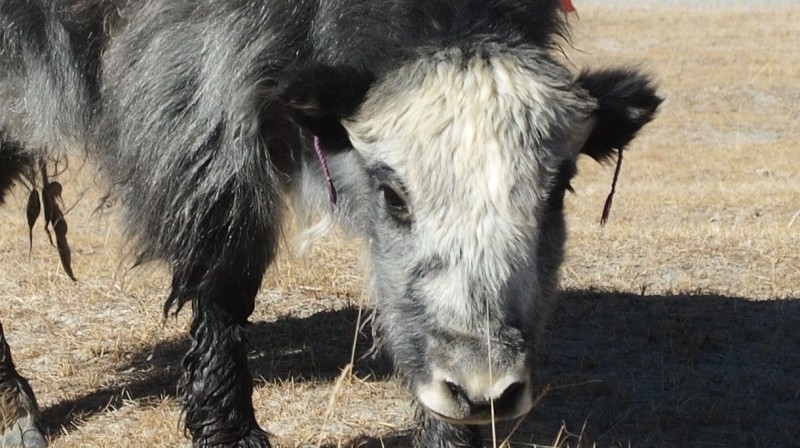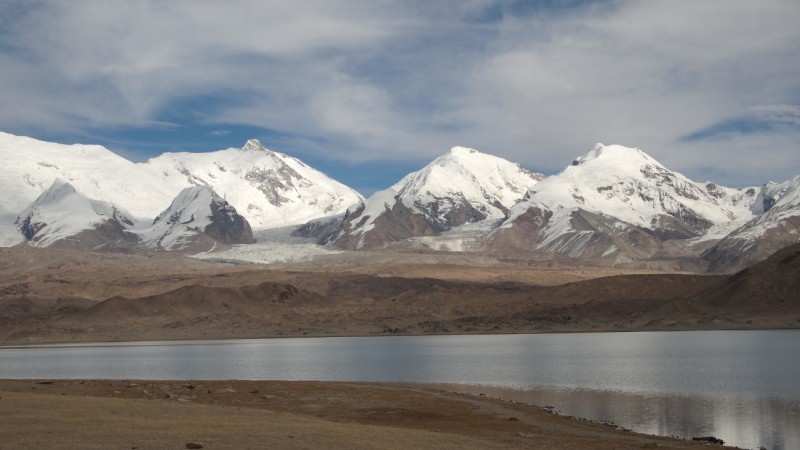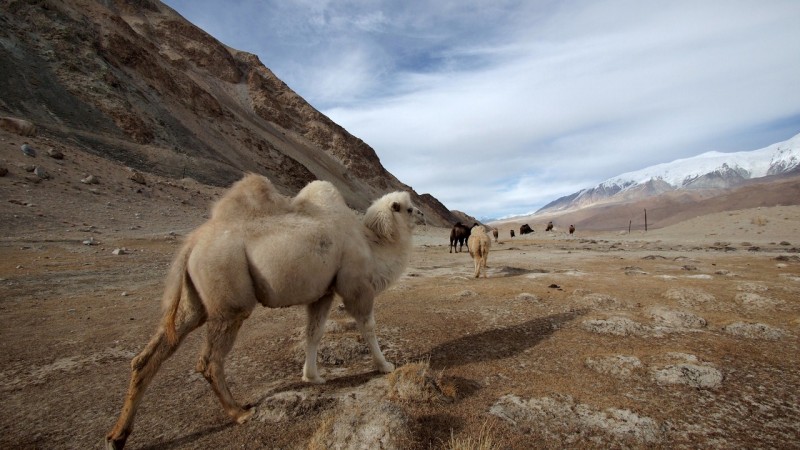While I get farther from the Kyrgyz border post I look around me. It’s so improbable to come back here that I want to remember it. A red wall on the other side of the canyon where I am, impresses. High Mountain without the minimum vegetation, a desolating place full of silence that very seldom is broken by a trailer that Passive Voice (consider revisiting) pass. A dense white breath getting out of my mouth until it disappears frozen, there is no wind, sometimes I go through it while walking. On a mount a watchtower, I imagine a bored guard missing home while I am delighted here. The river has little water, it has smooth turns in a grey stone river bend, on the distance I loose sight, how long it takes water to arrive the ocean from such a remote place? Army people with long green coats and fur huts that cover their ears. I don’t see birds; there is no reason to come here. A building that looks like an abandoned ski resort. A rusty flag pole with a gleaming red Chinese flag closer every step.
It’s a going through place, nobody would want to stay here long. The environment is beautiful but there’s nothing else. Inside me, the thrill of a new country that I wanted to arrive to. Nearly, need to arrive, as it was something I had proposed.
Coming, little by little, I had accumulated a willing to see China, until not that long ago I saw it far. Moreover, I wanted a change, after so many Muslim countries and two months in Central Asia, I want to start seeing new things. Here I tell you the arrival and what I’ve thought about Kashgar, the mythical Silk Road cities in China.
The first Chinese I met was, of course, the border guard. The front cover of my passport is so used up that it has no drawing. The Spanish shield was gone long ago and you just can see it if you know it existed and about the name of the country it just has some of the “e”, the “s” and the “a”. Carrying on with his work, he asks me what country I was from.
It must have been his only word in English. “Country?” I said “Spain” but he didn’t understand me so I kept trying with the rest of the variants that normally work: “Espain”, “España”, and “Spanski”… As he kept the face of “I have no clue”, I tried with the wildcard: “Europe”… he looked at the Chinese and made a minimum sign approving it and letting me in.
My head said… “ooooo ooooooo, It’s going to be complex moving around here…” but I ignored myself, I didn’t want to be too conscious of it.

In China… so Pagodas, temples, baddish, Confucianism… and burkas?

Of course, the pictures are hidden, stolen instants. If they can’t show their faces, how could they be in a foreign unbeliever camera?

I haven’t seen a burka in all the trip, not sure if one in Turkey, but I think I haven’t. I didn’t expect to see them in China.
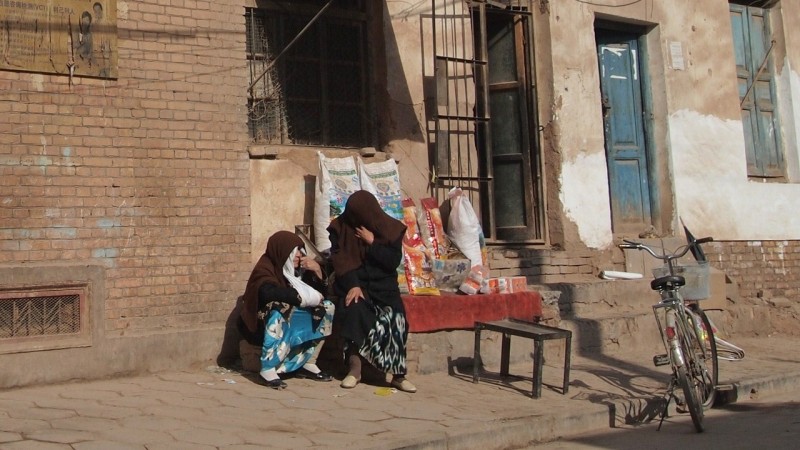
These were Budish lands until the silk road brought that new religion that was becoming so successfull and was expanding so fast. It came village by village, caravan by caravan, little by little, and it stayed until today.
Xinjinang is the most western region in China and most of it’s population is Uygur. The Uygur are a Chinese minority that apart from the different religion have totally different customs, things that causes the central government some trouble in that eagerness of those totalitarian regiems that have a united culture in all the country.
Regarding the Islam, I wonder if what I see now is strong because of a reaction to differentiate themselves to the rest of China, for emphasizing their difference with the Han majority that is the 90% of the country, to be clearly different to what the government tries to impose. I don’t know the answer but seems they haven’t changed their customs here in many centuries.
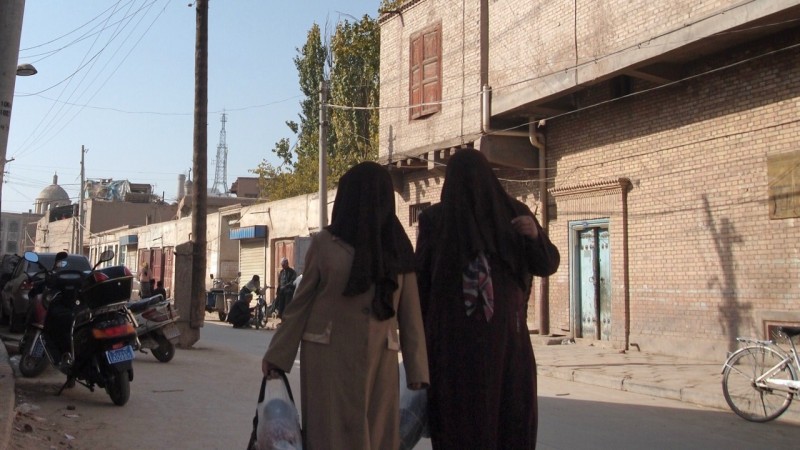
I wanted to buy one to see how you see through. Then I´ve thought that it would be super interesting to wear one in Burgos or Madrid to see how people look. Where can I get one?

For me the Chinesse food is an enough justified reason to come to China. I think I talk too much about food you are going to think I’m a glutton. I can finally eat a real sweet and sour pork… or not? To start they are Muslims so I haven’t seen a pig around.
I was wrong, my first mea; has not been other than Laghman, the noodle soup I’ve been eating in all Central Asia. It was truly tasteful but the main difference is that I’ve eaten it this time with chopsticks, if it wouldn’t be for this I’d thought I was in Kyrgyzstan.
Faces are the same, the eyes are identical, skin colour is the same… I thought that the immense Tien Shan and Pamir ranges had been more effective to make a difference between the region of both sides. There are times that I cross a border and I see a big instant change, other times the changes are smaller, gradual, as this time. There are books that include this region into the definition of Central Asia and with what I’ve seen I’d also include it.
Laghman is in the list of dishes I want to try and prepare when I’m back to Spain. Yes, I have a list of delicious things I want to keep eating the rest of my life. From the things I don’t want to taste I don’t make a list.

Kashgar rivals Kyrgyzstan in hats, in fact I think it wins. Here you have the link to the Kyrgyz hats video.

More hats. The faces could be Kyrgyz or Uzbek.

You see the banners? Chinese characters and, Arabic? The Uygur is a Turkic language similar to others in Central Asia but written in an alphabet derived from the Arabic.

A 18 meters high Mao statue in the middle of the city, I don’t think Uygurs appreciate it too much.
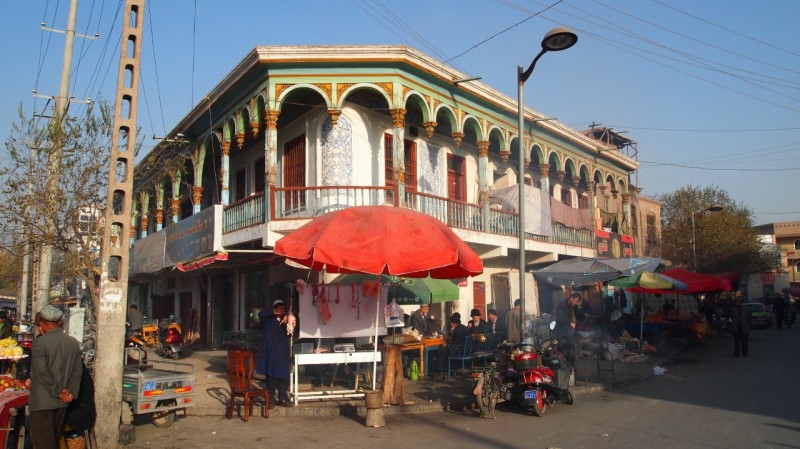
There is some old architecture with the arches and the balconies on the first floor. The city is full of constructions going on, they destroy this building with history and build ugly concrete buildings with lots of floors. The city is full of dust from the constructions. If the butler of the advert dues the cotton test he’d get dirty up to the knutkles.
Kashgar is a mythical city on the silk road, probably for most it’s a new name from what you don’t know much but Marco Polo already talked about it’s commercial importance in 1275 when he was here. He called the region Catay and from here there were routes to India. It is an Oasis city on the west of the Taklamakan desert. Still today it has what is probably the biggest market in central Asia.
It is located in the west corner of China, if you look at it in a map with the immensity of china seems that it’s in the border itself. It’s the last city, the one that then gives place to Central Asia. The region is the East Turkestan region and in some corners you’d think you are in the Middle East.
Nowadays Kashgar and Xinjiang have come back to be important. It’s location is vital for the Chinese expansion to the west. In the region there are 14 terrestrial open ports to the eight countries that borders it. Eleven international airports, hundreds of kilometres of roads and rails, the only road built over moving sands desert and petrol fields.
Beijing is fostering the economical development with the objective of a sound support of this expansion to the west. China can’t afford loosing this region with the independentists movements from the Uygur and hopes that this economical injection generates enough life quality to shut down the independentists instincts.

This banner was in the Id Kah mosque, the main mosque in town. I leave it to you the interpretation. It was after talking about the amount of money spent in restoring the mosque.

Addictive bread.
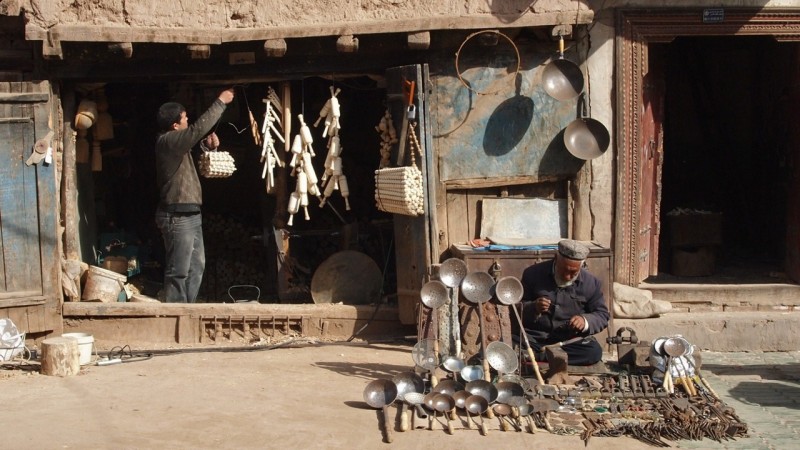
There is a lot of life in the streets even it´s freezing. The sun lies.
How is all this looking for you? I’m a bit disappointed. It’s beautiful, very interesting and totally exotic. But looks too much to Central Asia! I’d read it had a lot of similarities but expected more of a change. I felt like a change! I’ve been a few days down of energy, maybe I’m tired and I havent realized.
I was hoping for a change, see new things that would give me a little energy doses and enthusiasm I had lacked but as there is no change I’ve become a bit down. On top of it, moving around here is somehow more difficult than other places and I still have 4381 kilometres straight line to Beijing. As I’ve been a bit down of energy I haven’t planned anything and now I’m annoyed with myself for not having plan and having been here for a week.

On the sunday market. But I´ll tell you about this on the next post.
I have to wake up and move!
See you soon.
Fernando
